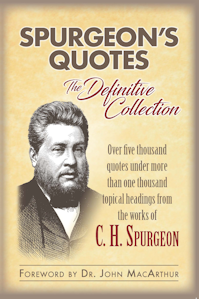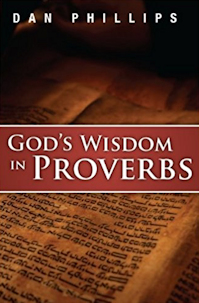(Grand Rapids: Zondervan, 2009; 5 volumes)
The 1975 edition of the Zondervan Pictorial Encyclopedia of the Bible (ZPEB) was an interesting creature. It was filled with line-drawings, charts, and B/W photos. Additionally, there were sections of color photographs, and maps. The contributors were a constellation of leading conservative scholars of that generation, including such luminaries as Oswald T. Allis, E. M. Blaiklock, James O. Buswell, III, Gordon H. Clark, John Murray, J. Barton Payne, Charles L. Feinberg, Carl F. H.. Henry, and many others. (There were giants in the land in those days; who are their like, today?) The editors themselves were leading conservative scholars: Merrill C. Tenney (General Editor), Gleason L. Archer, Jr. and R. Laird Harris (Old Testament). Renowned scholars a bit more to the left also featured, such as F. F. Bruce, Robert H. Gundry, H. L. Ellison, and Paul J. Jewett.
What of the content? It was very solid, though one occasionally had the feel of some haste, that the whole would have benefited from more editing. There were some errors, and there was the DOG. "What dog?", you ask. In the first printing, the article on DOG had this as the illustration:
As you might imagine, this caused some merriment. What did that line-drawing add to the article? Did they envision a reader saying to himself, "'Dog'...'dog'... hm, if only I had some idea of what a 'dog' looked like..."?
Subsequent printings quietly replaced the drawing with a picture of some bas-relief dog, as I recall.
The ZPEB was probably surpassed in use by the new edition of Eerdmans' International Standard Bible Encyclopedia, which also had a constellation of contributors, and was well-edited and laid out. Over the years, I came to depend more on the ISBE than on the ZPEB.
I imagine someone saying at this point, "Uh, dude? This is a review of the revision? Can you maybe join us in the present, stop rattling on about the 1975 edition?"
I'd love to, but the question is the degree to which the Zondervan Encyclopedia of the Bible (ZEB) has done so. I will 'splain.
But first, my initial impressions. The ZEB, of which I was graciously provided a review set, is quite a bit smaller than the ZPEB.
This has been achieved, however, at the expense of much thinner pages. If you are a fellow highlighter (Sharpie Accent marker, yellow [never fluorescent], #27005), there is a slight bleed-factor in the ZEB, whereas the ZPEB had none. On the other hand, the pages are now filled with nice-quality color pictures. However, due to the thin pages, you can see text through the pictures. But the ZEB has a generous margin of 1 5/16" by the text, over against 7/16" in the ZPEB. That is triple the margin, and it's a very nice improvement.
The font ratio of the article titles to the headings is odd. They both seem to bold, same type, same size, so as to compete with one another. Indeed, when the article heading is lower-case, one has the unusual impression that the headings out-size the article titles.
What of the contents? See, that's where it gets still odder. I'm not absolutely certain what is the point of the ZEB, exactly.
In his introduction, Silva basically says that he left most of the 34-year-old articles as-is. Plus, none of the original contributors was allowed to revise his articles. Huh? Silva does say he made some changes and updates, but not all of these changes are noted in the articles, and none is specified in the foreword — with the exception of the fact that he updated the Bibliographies.
There are new contributors, but not many. By my count, there are 255 total contributors (plus Silva, whose contributions are not detailed). Of those 255, only 15 are new, meaning that 240 contributors (and their articles) remain as-is. The newcomers are either not as famous as their predecessors, or I've lost touch. Of the fifteen new contributors, I only readily recognize Richard Gaffin, John Frame (1 article), and Grant Osborne. Maybe that's a negative comment on me, but there it is.
So, does it matter? Of course, I've not read all the ZEB, but one can envision some issues and persons who have become hot points in the last 30+ years. For instance, N. T. Wright. Could an article be published today on, say, justification, or righteousness, or Paul, without interacting with Wright, or at least noticing him?
Evidently it could. In fact, the article on Justification is just sort of odd to read today. It's written by Lutheran pastor L.M. Peterson and, while there's good content, it is written as if for Lutherans, citing Lutheran works and creeds. Same outline as in the 1975 edition, only change to the contents I see easily being removal of the Greek words from the beginning. None of the wealth of literature post-1975 (some of it in response to Wright) is noted, much less interacted with. Wright doesn't even show up in the Bibliography of this article, surely a major omission. Carson's Variegated Nomism, a response to Wright, does appear. Odd, eh?
I seem to keep using that word.
Similarly the article on Righteousness by Addison H. Leitch (who died in 1973) is 18 pages, yet contains no mention of Wright, nor interaction with recent literature. Ditto Atonement, by Paul K. Jewett (died 1991). In Pauline Theology (Richard Longenecker, still living but not allowed to revise article), Wright appears — but only in the Bibliography.
How else to check for timeliness? I found no article on Wisdom Literature per se, so can't measure if the last three decades' work is reflected. A. K. Helmbold's article on Proverbs does not interact with the rich crop of literature dating from after the 1960s, let alone the commentaries of Fox, Waltke, or Garrett. The article on Hebrew poetry by R. K. Harrison (died 1993) is solid and thorough, but does not reflect the work of Kugel (1981), Watson (1984), or other more recent writers. The article on the life of Jesus seems to be Donald Guthrie's original article (later made into a standalone book), with no updates for the last 30+ years of Jesus-studies.
So what is new? Well, instead of using KJV-RSV-ASV, the new version uses NIV-TNIV-NRSV. In "going there" rather than using (say) the ESV, there is not only a change of translation, but of translation-philosophy. Odd? Readers will vary in their estimation as to whether the NIV/TNIV is a step up.
Additionally, we are told that "hundreds of brief new articles have been added, making it easer for the user now to obtain quick information on a broad range of relevant topics" (1:v). Such as? "Akiba, rabbi" (unsigned, about 160 words), "Aleppo" (unsigned, about 45 words), "amanuensis" (unsigned, about 125 words), and "rhetorical criticism" (unsigned, about 180 words).
But there are about 20 new major articles. Are they by leading authorities? Here are some of them:
- "Apologetics," by William Edgar
- "Cartography, Biblical," by Barry Beitzel
- "Deuteronomic History," by J. Alan Groves
- "Ebla," by Richard S. Hess
- "Ethics in the Old Testament," by Esteban Voth
- "Ethics of Paul," by Alexander Cheung
- "God, Biblical Doctrine of," by John M. Frame
- "Pseudonimity," by Stanley Porter
- "Type, Typology," by Grant R. Osborne
- "Union with Christ," by Richard B. Gaffin, Jr.
- "Warrior, Divine," by Tremper Longman III
Yet here's another... wait for it... odd thing. The ZPEB article on the Flood (Genesis) was by local-flood proponent W. U. Ault. Ditto ZEB. The outline is the same. The article references articles and books from 1951, 1937, 1946, 1964... I saw no recent addition until the very end. The revised actually has fewer illustrations than the original. But here's the really odd thing: the ZPEB article ends with thirty-five lines of bibliographical entries... and they're all gone in the ZEB revision. Instead, the article now ends with a single inserted reference to a D. A. Young book from 1995! This is an odd exception to the other articles, where the original bibliographies are supplemented with more recent entries.
Odd, eh?
Upshot. So, what do I think? I'm puzzled. I am, as I said, unsure as to why the project was undertaken. It isn't even close to a full revision, nor even a full updating. It's basically the 1975 encyclopedia on thinner pages, with wider margins, a lot more color pictures, updated bibliographies, less than two dozen major new signed articles, hundreds of minor unsigned articles, and an unspecified number of updates.
So in sum: it is graphically an improvement over the 1975 edition (apart from the font issue), but not a whole lot more up to date, as far as I could tell. For personal or family use, and as a reference for Bible studies this may matter little. The absolutely stellar quality of the original contributors means that their work will have lasting value. For pastors and seminarians, the dated nature of some of the articles will matter more.

















16 comments:
Ah yes, 1975 or as I call it, "the good old days". A simpler time, when I was born and when dictionaries and encyclopedias came in book form...
Dude, we're old.
*Stands and lowers his Steelers cap to cover his heart as the soft strains of "Taps" begins to play, while everyone in my office wonders why I'm standing with a ball cap over my heart, and where the trumpeter suddenly came from.*
Did they envision a reader saying to himself, "'Dog'...'dog'... hm, if only I had some idea of what a 'dog' looked like..."?
Brilliant.
So, what do I think? I'm puzzled. I am, as I said, unsure as to why the project was undertaken.
Think Zondervan=$
Thinner paper...booooo.
I recently purchased the Zond. Illus. Bible Back. Comm. set...in the Acts article there is a picture of a cloud with the catchy caption "cloud" :))
Well, there y'go!
(c:
Good review but one question: Are you surprised that Zondervan using the TNIV/NIV over the ESV? Who is the publisher of NIV and who is publishing the ZEB? I don't think it is Crossway. . .
Hey! Hands off my starry-eyed idealism!
Yeah, next to the entry on "Starry-eyed Idealism" there's a picture of DJP.
Oh? I thought it was a drawing of a DOG.
This is a very entertaining review.
It reminds me of pre-Internet days, when one of the best ways to do any research was to go down to the library and find the authoritative, multi-volume reference work on the subject, all dusty with that stale-paper smell, and which might well have been published in 1975.
I still like ISBE; my Dad had the set when I was a kid, and every now and then I would check it out. I came to appreciate it even more as I got older. Never experienced the ZPEB, and it sounds like I'll probably just continue to enjoy ISBE given your assessment of the ZEB.
I don't know how old you are, Bobby. If it was your dad's set, was it the 193x edition? I still have that as well; goodness, but they knew how to lay out pages and set type in those days!
I think the 197X ISBE is very good. I see it was... done up in some way in 1995. I wonder how much of a revision that was, if any?
Dan,
I'm 36. I'm pretty sure it was the oldest version (the 193x). I would like to get my hands on my dad's set; I think they're just boxed up somewhere. My grandparents gave the set to him when he was ordained (Conservative Baptist) back in the 70's. I would be interested in seeing what they've done to it in the 1995 revision. I just like "old school" stuff (not that its always better, but there is something about that era of Christianity that I miss and we are unfortunately losing).
I like Merrill C. Tenney's New Testament Survey as well. What I thought was cool, was that my dad was assigned that book when he went to Bible College; and when I went to Multnomah one of my profs (he was old school too) assigned Tenney's Revised version (by Walter M. Dunnett) for our NT survey class. Cool.
That is cool.
I really loved Tenney's The Reality of the Resurrection. Good book, good guy.
And (interesting fact) I think you'll find that the 193x ISBE is not the original, which was actually printed in the 'teens. So the '95 would be at least a revision of a revision of a revision.
(c:
Wow, didn't realize ISBE went back that far.
I've only read Tenney's "New Testament Survey," I'll have to check out his Reality of the Resurrection . . . thanks!
Post a Comment